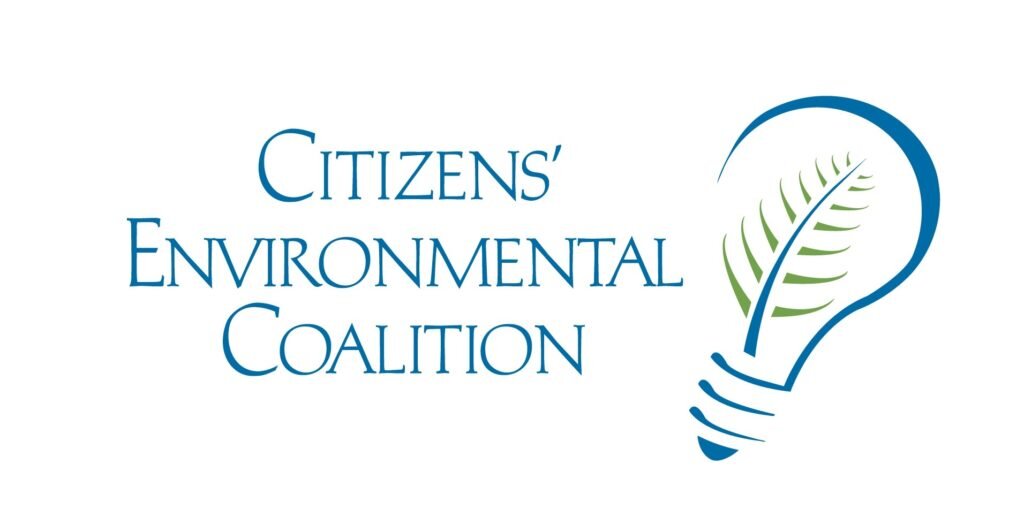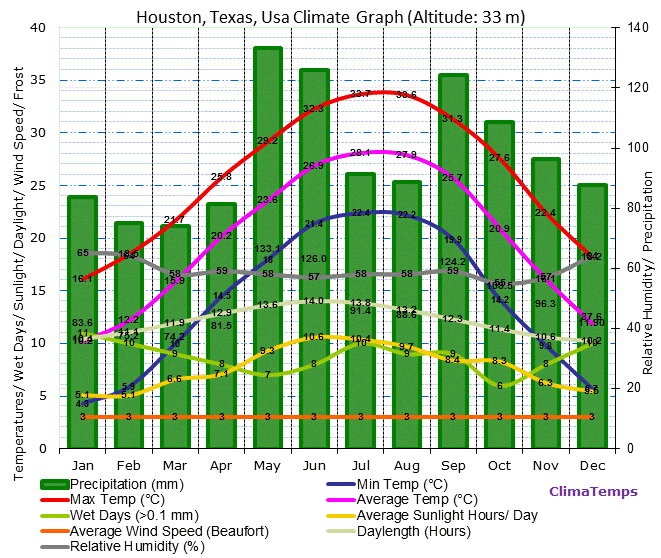Climate Change
Below are resources to help you teach about climate change, and the unique impacts it will have on the Gulf Coast.
Overview
“Climate is what you expect. Weather is what you get.”
Courtesy of Climatemps.
Temperatures are projected to rise by 2100.
Image from U.S. Global Change Research Program.
Increased carbon dioxide in the atmosphere leads to an increase in global temperatures.
According to the City of Houston, in 2014 Houston emitted 34.3 million metric tonnes of carbon dioxide equivalent. Our biggest sources are transportation and commercial & residential buildings. Houston has one of the highest per capita greenhouse gas emissions in the country. Recently, the city unveiled a Climate Action Plan to engage our community in positive change.
From c40.org
Effects
According to the National Oceanic and Atmospheric Administration, students should understand:
The effects of human-caused climate change can already be seen, such as extreme storms like Hurricane Harvey.
Some of the infrastructure created by humans is in danger, such as the extra burden on the energy grid from extreme weather.
Climate and precipitation patterns threaten agriculture and food security.
Since the 1950s, Houston has seen an 167% increase in our heaviest downpours. As the atmosphere continues to warm, storms continue to drop more rainfall in a shorter amount of time. With the added impervious cover (concrete) in Houston, flooding is inevitable.
As ocean temperature rises, due to thermal expansion, sea levels rise. For communities along the coast, even the slightest changes can have big impacts. On average, sea levels have risen over two feet the last 100 years by Pier 21 on Galveston Island. By 2035, given a moderate scenario, nearly a quarter of the Bolivar Peninsula is expected to flood 26 times or more per year, or every other week, on average. And as the water rises, the sand and shorelines continue to erode into the bay and gulf.
Saltwater intrusion into freshwater areas turns water brackish; organisms may not have adaptations to survive changes in salinity.
Galveston Bay Report Card, Sea Level Rise at Pier 21
Conservation Efforts and Local Resources
City of Houston’s Office of Sustainability
Harris County Office of Sustainability
City of Houston CLIMATE ACTION PLAN is focused on reducing emissions in the four areas -- Transportation, Energy Transition, Building Optimization, and Materials Management – which generate most of the region’s greenhouse gas emissions. Each focus area identifies goals, strategies, actions and targets for residents, businesses, and the City to follow.
The movement has three Hubs in Houston, and they work to empower youth activism and political engagement.
Activities/Lessons
New to teaching climate change? Start with “The Essential Principles of Climate Literacy.”
Elementary School
Complete a Climate Change Audit with resources from the National Wildlife Federation, including a Climate Change for Kids page.
Need lessons & activities? Start with the Flower Garden Banks National Marine Sanctuary, a program of NOAA. Coral bleaching and ocean acidification affects our homegrown corals.
This is a lesson generated by a local teacher called “Hitting the Big Time with Climate Science” - Science, Grade 5, TEKS 1-4, 7 & 8. Students will create a speleothem model using art sand to create “drip castles,” similar to those many students make at the beach, reinforcing their growing understanding of time in the weather/climate analysis, and deepening their understanding of the relationship between the geosphere, hydrosphere and atmosphere.
middle and High School
Complete a Climate Change Audit with resources from the National Wildlife Federation. The Cool School Challenge engages students and teachers in practical strategies to reduce carbon dioxide (CO2) and other greenhouse gas emissions school-wide. Students challenge individual classrooms to reduce their carbon emissions over a set period of time, and utilize a carbon calculator to evaluate progress. Additional resources are found on their Climate Change Education page.
Take a look at H3AT. Houston’s Heat Action Team measured the urban heat island effect in 2020. Try this lesson for 3 - 8th grade Science & Social Studies about measuring heat islands, comparing regional data, and finding small solutions throughout the community. Here’s a quick video about the project, too.
From NAAEE, the Environmental Issues Forum on Climate Choices for High School or Middle School provides teacher guides to moderating a forum with students. It also includes resources on teaching about climate change issues.
NOVA’s Polar Lab for Grades 6 - 12 includes videos & interactives, which can be uploaded to Google classroom for digital learning. Students can actively participate in the scientific process and take part in real-world investigations by visualizing, analyzing, and playing with the same data that scientists use to study climate change.
NOVA’s Cloud Lab for Grades 6 - 12 includes videos & interactives to help students distinguish between climate and weather. Great for digital learning.
Project Learning Tree created “Carbon & Climate” e-units for grades 6 - 8 which are fully online. There are activities and resources to introduce students to climate change.
Want to explore climate conditions projected for your location in the coming decades? Check out the recently updated version of NOAA's open-source Climate Explorer tool. The mobile-friendly tool includes graphs of climate projections. NOAA also has videos about climate change, ocean acidification & corals, and arctic sea ice. Locally, Flower Garden Banks National Marine Sanctuary, a program of NOAA, lets you investigate ocean acidification and coral bleaching in the Gulf.
NOAA National Weather Service interactive visualization includes outlook maps for different types of weather predictions. The map includes temperature and precipitation predictions for up to 3 months out, as well as predictions for tropical hazards, weather hazards, and drought.
This is a lesson generated by a local teacher, called “Climate Change 5E Lesson Plan.” (PDF Version, or Word Version) - Environmental Science, TEK: 9D. Students will investigate the greenhouse effect through a simulated game.
Use the Footprint App to track and learn about your actions to develop more sustainable habits. Find out how your day-to-day choices are connected to the environment. Available as a web application or mobile device on www.footprintapp.org.
Use Climate Interactive, a weeklong project or simulated games in which students develop a personal vision for solving climate change that is grounded in economics, equity and science.
I SEE CHANGE is a place to upload observations of change in your neighborhood to help scientists better understand climate change and weather. During weather events, upload pictures to help scientists track weather trends.
Three U.S. Climate Resilience Toolkit Case Studies in the Gulf Coast:
1. After Record-Breaking Rains, a Major Medical Center's Hazard Mitigation Plan Improves Resilience: Widespread damage from flooding at the Texas Medical Center in Houston revealed the complex's vulnerabilities. Implementing a long-term hazard mitigation plan is reducing future risks.
2. A Climate for Resilience: The City of Houston faces an array of climate vulnerabilities: flooding, drought, tropical cyclones, and extreme heat can all affect the city's population and industries. Government and non-profit agencies in the region combined their resources in a pilot project to plan for climate resilience.
3. Island Medical Campus Recovers, Rebuilds to Face Future Storms: In the wake of a hurricane and beset by an economic recession, the University of Texas Medical Branch on Galveston Island rebuilt for future resilience.









